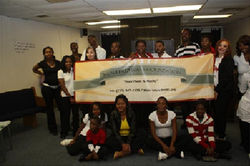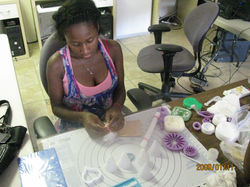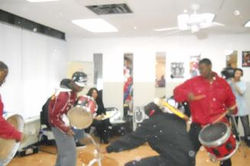
Mildred Franks Community Development Corporation
Putting At Risk Children on the Right Track:
There is more than one way to make a soup:
Similarly, there are many ways you can do to help put a wayward child back on track... At risk youth are unlike most troubled youth, that most of them are misguided youth who needed lots of support, encouragement and the right blend of opportunities that will coax them back on track...
How do you help an at risk child?
Here, we have come up with some basic solutions that will definitely help…
Building significant, positive and sustained relationships...
One major shortcoming when dealing with an at risk youth is the inability of caretakers, teachers, and even their parents to have a significant, positive and sustained relationship with them. And this is without doubt one of the many things these teenagers truly need...
All teenagers, and not only the at risk ones, need positive, significant relationships with people whom they can build a sense of trust and reliance and whom they know they can communicate their happiness, their frustrations, and dreams without fear of consequence... This is one reason why most kids are reluctant to form this kind of relationship with their parents, or any adult that fills the role as a guardian, for the fear of reproach and repercussions such as being grounded or deprivation of benefits like allowance or use of a car. According to Richard Titus, a high school teacher who had 19 years of experience with kids, he said most teens would rather approach their teachers than their parents to talk about their problems in life. He said that these teens are often confused and they needed someone dependable to show them the way, to provide encouragement and support and to champion their cause... Yet, teacher to student relationships are
not so easy to sustain...
For the majority of public schools wherein class sizes number almost to 30 kids per class, and the teachers’ time limited, teachers can commit only a few moments of their time to one specific child...
To address this, parents should open opportunities for this to happen... Some institutions are better equipped to meet this obligation, like private schools more so than public schools... So whenever possible, if your child is at risk, put him or her in an environment – a private school to be exact – where positive and meaning relationships can be built and sustained...
Putting them in an environment conducive for change...
Despite our best interest, sometimes our homes are not the best environment for an at risk child and could in fact contribute to their decline. For example, a bad neighborhood, accessible and unregulated forms of media such as internet and cable television, unhealthy surroundings, bad role models within the family, negative peer pressure from neighboring friends, etc. Parents who are often away for days or weeks can contribute to the negative home environment... In fact, according to the U.S. Department of Labor, U.S. Census Bureau, Urban Institute, and U.S. National Dropout Prevention Center, an empty house is one of the main starters of at risk children... Latchkey children, which according to them account for some 28 million secondary school children in the U.S., have very high incidence of becoming at risk status due to loneliness, boredom and fear. Among teens, there is a high susceptibility to negative behaviors due to peer pressure, such as smoking, drinking, drug abuse and sexual promiscuity...
An empty house is not an environment conducive for change, and so is an unregulated environment where inhabitants will “do as they please...” If you are unsure whether you or your home can commit to a level of attention and care needed by an at risk youth, put him or her in a place where all these requisites for change are met...
For example, some types of boarding schools offer to students a highly structured and monitored environment where students play, study, eat and have fun with peers in a positive atmosphere…
Supervision, supervision and supervision:
An at risk youth do not attain goals by themselves... Rarely too will they conquer their weaknesses by themselves. Like it is the role of every parent to teach good character values, positive behavior, self control and respect, it is also their role to see if this is observed and to give them bottom spanking if these rules are not followed... Parents need to supervise their children... Like any of us, children tend to behave when they know somebody is watching their behavior...
"There are one in seven young adults ages 16-24 who are not in school or working—totaling 5.5 million disconnected youth..."

A better definition (of 'at-risk youths') is youths who are at risk of being failed by one or more adults or adult-driven system or institution.”'

The American Dream is at risk...
 |
|---|
 Describe your image. |
 |
 IMG_1603 |
 |
 |
 |
 |
 |
 |
 |
 Describe your image. |
 Describe your image. |
 Describe your image. |
 Describe your image. |
 I know I can, Be What I Want To Be... |
 Describe your image. |
 Describe your image. |
 gr-226Describe your image. |
 Describe your image. |
 Describe your image. |
 Describe your image. |
 Describe your image. |
Want to eliminate at-risk kids? Call them something else...